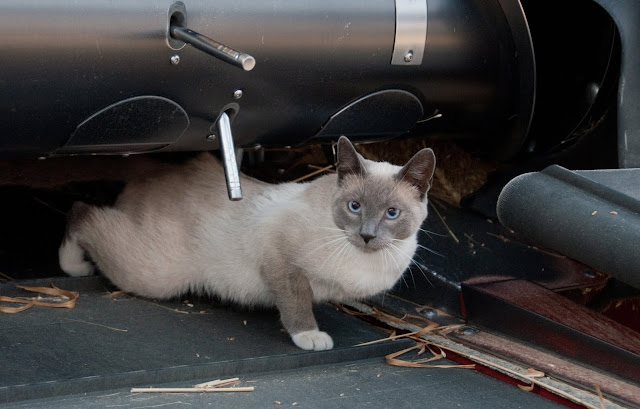Exile on Mainstreet
 |
| Puddle, the Glory Days |
Big Sandy's Main Street Puddle is no more. At least this is what I am told. Officially named the Joe Trepina Memorial Main Street Puddle, "Puddle" was paved over in October 2022. When I learned of this mainstreet paving project, I immediately called a meeting of our clandestine puddle organization "Citizens Recognizing and Promoting Puddle," otherwise know as C.R.A.P.P. We considered several strategies to save Puddle from the pavers. But our pleas to city leaders went unheard. Our attempts to put together a citizen petition were for naught. The Montana Tourism Board was unsympathetic, and frankly, unresponsive. However, we learned that there were dissidents within the paver cartel--patriots who were Puddle devotees. Would they be able to help save Puddle? Or were they too concerned about their jobs to get involved? Would the dark of night offer any way to preserve this precious monument, or would Puddle simply be canceled? Time will tell. Our meetings were intense, and emotions ran high. The pitchforks nearly came out, to be directed at the Puddle deniers and those who hated Puddle and all it stood for. Cooler heads prevailed. For now.
As the paving robots came closer and closer, I began to lose hope that Puddle would survive. What would be the fate of Puddle? What effect would its absence do to the spirit of our town? How will we survive without the Puddle tourist trade? Who will change the Big Sandy Wikipedia entry? So many questions, all difficult to answer.
Whenever we as a society have questions about the future, the surest answer can be found in examining the past. I believe that the history of Puddle offers us hope that it will rise again.
The first known photograph of Puddle is from 1919. Those were the days when Puddle was uncensored, free from the rules of modern life. Free from the constraints of tar, sand and rock. Free from the new-fangled ideology of the 21st century. But the world of asphalt caught up to Big Sandy. And Puddle survived that. Puddle overcame the adversity of asphalt and presented itself to the world as something timeless and undeniable. Make no mistake, Puddle is not dead. For now, Puddle is in exile under mainstreet, but civilization's efforts to destroy it amount to no more than a paw scraping the litterbox.


































